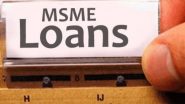The J-Curve is a concept that plays a significant role in various fields, including economics, private equity, and even social sciences.
Understanding the J-Curve is essential for professionals and scholars alike, as it helps to explain the initial dip followed by a subsequent rise in performance, growth, or returns.
In this blog, we will explore the definition of the J-Curve, its historical context, and its applications in economics and private equity.
J-Curve Definition
A J-curve is a graph that illustrates a period of initial decline followed by a significant recovery, creating a shape similar to the letter "J".
This concept is often used to describe scenarios where long-term gains eventually overcome short-term losses or setbacks. The initial downturn is followed by a rapid upturn, creating the curve's distinctive shape.
In simpler terms, the J-Curve illustrates how things may get worse before they get better. This concept is particularly relevant in situations where an investment, policy change, or strategic decision leads to an initial decline, followed by substantial improvement over time.
Historical Context and Origin of the Term
The term "J-Curve" was first introduced in the context of economics to describe the short-term negative effects of currency devaluation on a country's trade balance, followed by a positive turnaround. The concept was popularised in the 1970s by economist Paul Krugman, who used it to explain how devaluation initially worsens a country's trade balance before improving it as export prices become more competitive.
Since its inception, the J-Curve has been applied to various other domains, including finance, sociology, and political science. The concept has evolved to represent any scenario where an initial decline is followed by a significant improvement, making it a versatile tool for analysis across disciplines.
Importance of J-Curve
Understanding the J-Curve is crucial in multiple fields, as it helps stakeholders anticipate and manage short-term challenges while focusing on long-term benefits. In economics, the J-Curve can explain the effects of currency devaluation or trade policies. In private equity, it can illustrate the investment cycle where initial returns may be negative before turning positive as the portfolio matures.
By recognising the J-Curve pattern, decision-makers can make informed choices, remain patient during the downturn, and capitalise on the eventual upswing. This understanding is especially vital for investors, policymakers, and business leaders who must navigate complex environments with potential short-term setbacks.
Applications of the J-Curve in Economics
In economics, the J-Curve is most commonly associated with the effects of currency devaluation on a country's trade balance. When a country's currency is devalued, its exports become cheaper for foreign buyers, while imports become more expensive. Initially, the trade balance may worsen because the price of imports rises faster than the quantity of exports. However, over time, as exports increase and imports decrease, the trade balance improves, resulting in a J-shaped curve.
The J-Curve can also be observed in other economic scenarios, such as the impact of fiscal policies, structural reforms, and business cycles. For example, when a government implements austerity measures, the economy may experience an initial downturn before stabilising and recovering. Understanding the J-Curve in these contexts helps economists and policymakers develop strategies that anticipate and mitigate short-term challenges while focusing on long-term growth.
The J-Curve in Private Equity
In private equity, the J-Curve describes the investment performance pattern where early-stage investments typically show negative returns due to initial costs, such as fees, expenses, and the slow realisation of returns. As the investment matures, returns begin to improve, and the portfolio eventually generates positive returns, creating the characteristic J-shape.
This phenomenon occurs because private equity investments often involve a long-term commitment, with substantial capital outlays in the early stages. The J-Curve highlights the importance of patience and a long-term perspective in private equity investing. Investors who understand this concept are better prepared to weather the initial downturn and benefit from the eventual upswing in returns.
Conclusion
The J-Curve is a powerful concept that transcends various fields, offering valuable insights into the dynamics of performance, growth, and recovery. Whether in economics, private equity, or other domains, understanding the J-Curve allows decision-makers to confidently navigate short-term challenges, knowing that long-term gains are often just around the corner.
By recognising and anticipating the J-Curve, investors, policymakers, and business leaders can make informed decisions that lead to sustained success and growth. The J-Curve serves as a reminder that setbacks are often temporary, and a significant upturn is likely to follow with the right strategy and perseverance.



















